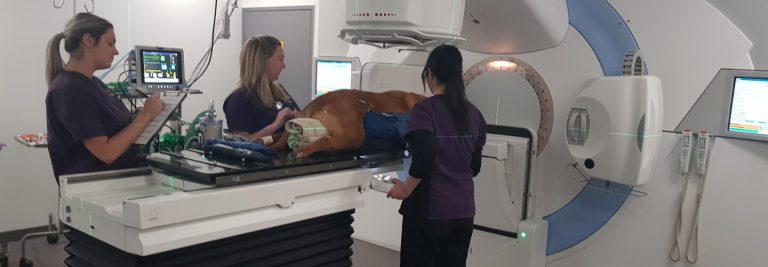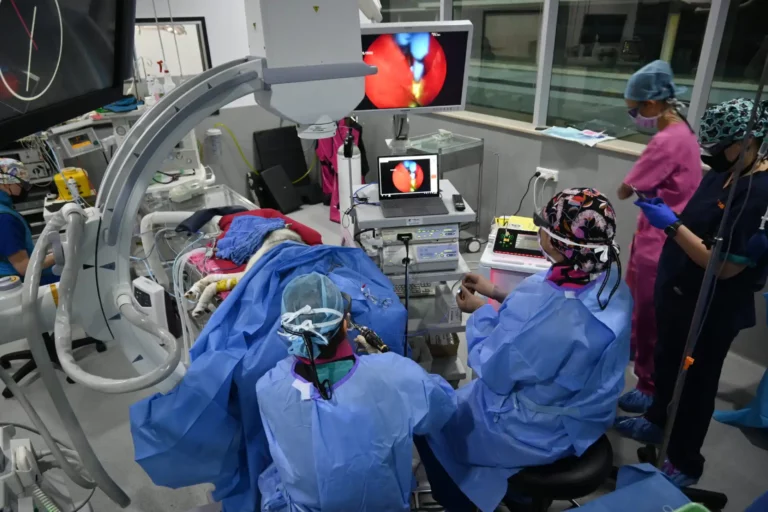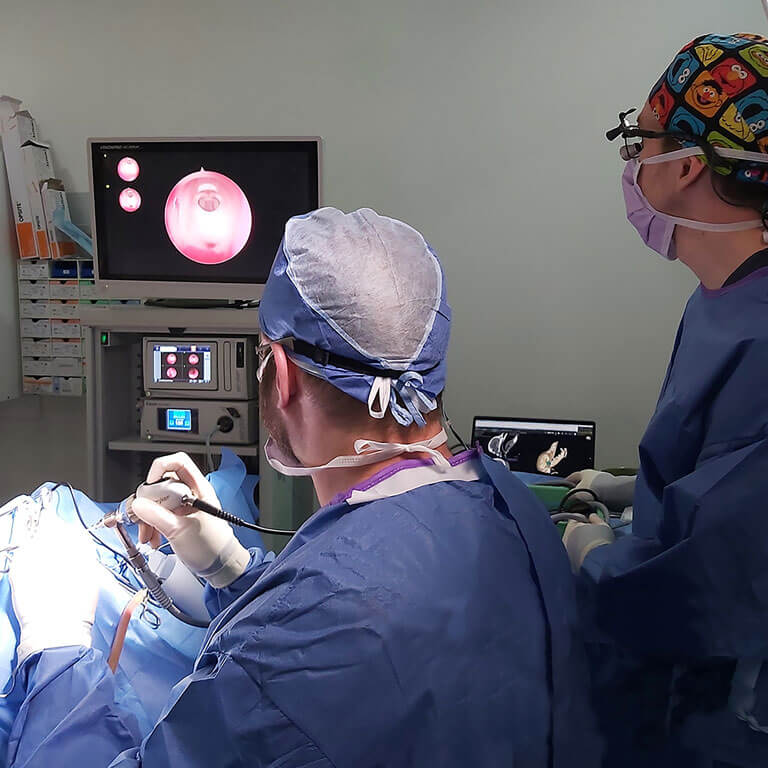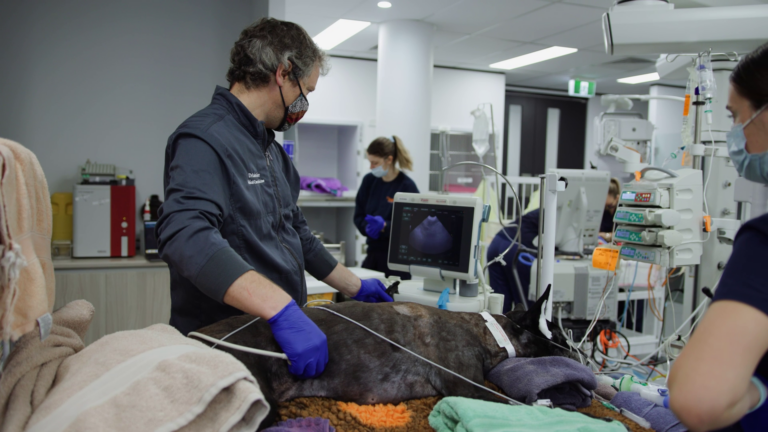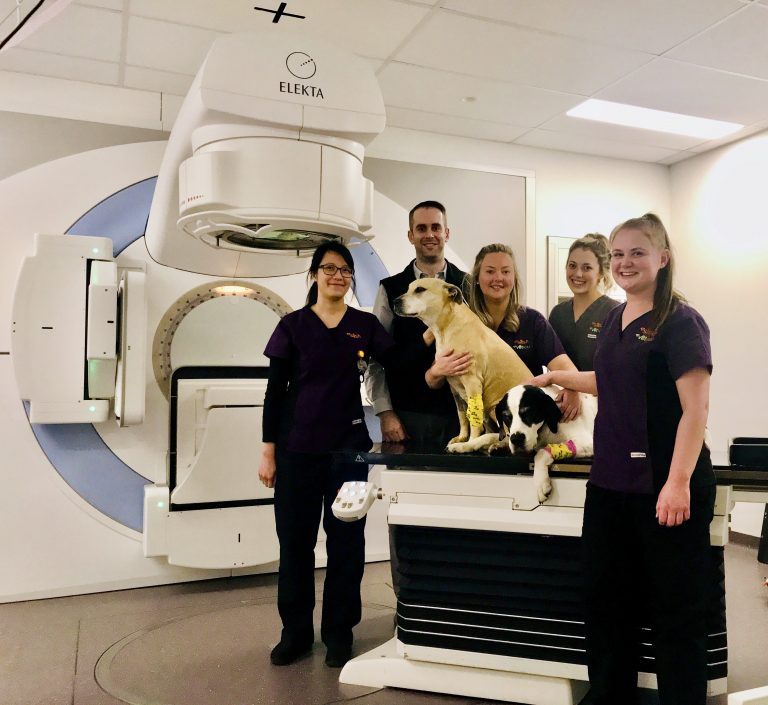Learn more about cancer treatment for pets
[FREE DOWNLOAD] 10 Signs Of Cancer In Dogs – Checklist
If your dog is undergoing cancer treatment, it’s important to educate yourself on what to expect. Chemotherapy, radiotherapy, and surgery each have unique considerations and side effects. Understanding these factors can make treatment less stressful for both you and your pet.
Chemotherapy
What to Expect Before Chemotherapy
Before beginning chemotherapy, the oncologist will blood tests and other diagnostics to assess your pet’s overall health. Additional tests may also be required to characterize your pet’s cancer, allowing more targeted chemotherapy.
What to Expect During Chemotherapy
There are a variety of chemotherapy drugs and protocols used in dogs. The oncologist will determine the best protocol for your dog’s particular cancer and overall health status.
Many chemotherapy protocols involve the delivery of intravenous (IV) infusions, given every one to three weeks. You may be able to wait at the veterinary hospital as these drugs are administered, or you may drop your dog off with the oncologist for the day. Alternatively, some chemotherapy protocols involve giving daily oral medication, which you can do at home. Your dog will also have veterinary visits between treatments, intended to check blood cell counts and monitor your pet’s response to treatment.
During chemotherapy, you will need to take precautions when handling your pet’s waste. Drugs may be excreted in the urine and faeces, so the oncologist will provide you with information regarding safe handling of your pet’s wastes.
Although most dogs tolerate chemotherapy well, side effects can occur. The most common side effects include gastrointestinal effects (vomiting, diarrhea, or loss of appetite) and decreases in blood cell counts. If these occur, your veterinarian may modify your dog’s treatment protocol or prescribe medications to keep your dog comfortable.
What to Expect After Chemotherapy
The goal of chemotherapy is to put your pet’s cancer into remission. If this occurs, your veterinarian will continue to monitor your pet on a regular basis to look for signs of cancer recurrence. If cancer recurs, chemotherapy is typically resumed.
Radiotherapy
What to Expect Before Radiotherapy
Prior to radiation therapy, your pet will be anesthetised for a CT scan of the affected area. At this visit, the veterinarian will also determine your pet’s optimal positioning for radiotherapy and establish landmarks to be used for the delivery of radiation.
What to Expect During Radiotherapy
Radiation is delivered as a series of 30-minute sessions, each of which requires general anaesthesia. A pet may receive anywhere from one to twenty sessions, typically delivered once daily Monday – Friday. Therefore, you will either board your pet with the oncologist during the week or bring your pet to the oncologist once daily.
Side effects can occur, often developing towards the end of treatment. The good news is that these side effects typically resolve quickly and only affect the specific area that was radiated. You may see skin inflammation, hair loss, and changes in skin or hair colour. If your pet receives radiation near the eyes, you may also notice eye inflammation. These effects are typically temporary and easily treated.
What to Expect After Radiotherapy
Your pet is not “radioactive” after treatment. You can take your pet home and cuddle with them as you normally would.
If side effects occur, they typically resolve within a few weeks of the end of treatment.
Surgery
What to Expect Before Surgery
In some cases, chemotherapy or radiotherapy may be performed prior to surgery. This can shrink the tumour and allow for more thorough removal.
The oncologist may also perform advanced imaging prior to surgery, such as a CT scan or MRI. These tests can better define the tumour edges and plan for surgery. Pre-anaesthetic bloodwork will also be performed, to assess your pet’s overall health.
What to Expect During Surgery
Surgical treatment of cancer is largely dependent on the type of tumour that is to be removed. Your veterinarian will speak to you about what surgical procedure your pet will receive, as well as the risks and benefits of the procedure.
What to Expect After Surgery
Follow-up care varies, depending on the surgery performed. Your veterinarian will review all post-op instructions with you at discharge. Your pet will likely be discharged on pain medication and may need to wear an e-collar (cone) to prevent self-trauma. Activity restriction may be required, depending on the surgery that is performed. The incision will need to remain clean and dry while healing; if skin sutures are utilized, they may need to be removed in 1-2 weeks
Remember, cancer treatments can vary significantly, depending on your pet’s cancer and the specific treatments provided. It is always best consult your specialist for more information on what to expect when your pet begins cancer treatment.
